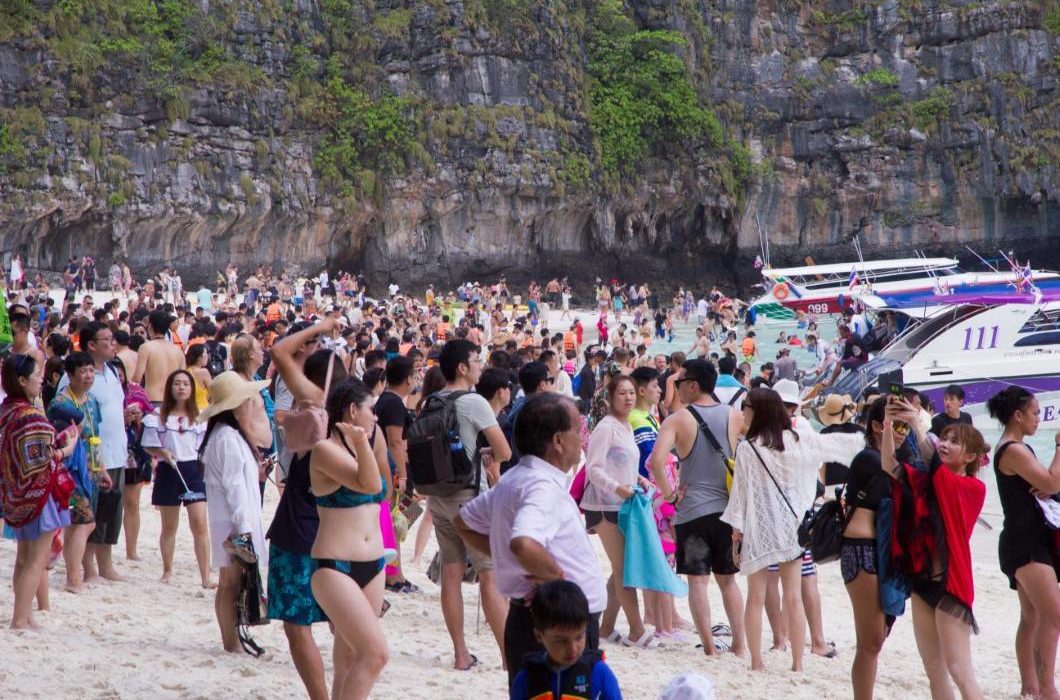
You might also like:
Attracting more tourism or preserving their ecosystem is a dilemma that beaches and islands around the world are facing today. The massive and uncontrolled arrival of visitors to important ecological areas has become a problem for several of these destinations, which have been forced to close their doors despite the revenues that tourist activities represent for them.
The most notable case is the one of Maya Bay, known for its clear turquoise waters, white sands and unique fauna, which reported daily visits of 6,000 tourists. Although the beach was closed every year for three months to allow its ecosystem to recover, in June of last year, it became evident that this period wasn’t enough. At the end of 2018, the authorities decided to close it indefinitely.
The Thai beach began to receive more visitors once it became popular in 2000 through the film ‘The Beach’, starring Leonardo DiCaprio. Thousands of people began to arrive at the location to take a photo in the same place where the actor was: a tourist activity that was accompanied by hundreds of boats, causing damage to the coral reefs, polluting the ocean, and littering the beach with trash.
Although tourism represents 12% of Thailand’s GDP, its authorities had to prioritize the preservation of the area. Six months after its closure, the sharks that had fled these waters began to return.
Manuel San Martin, a member of Ocean Quest, explains that the area is slowly recovering. The organization, of which he is part, is associated with the department of national parks conservation of that country for the restoration of coral reefs. Twice a month, San Martin visits the beach to do his work. Up to now, 18,000 coral fragments have been planted in Maya Bay, making it the largest restoration project in the area.
At the moment, global attention is on this beach, San Martin says, but there are other places in the same country and in other areas of the world experiencing the same problem, deciding between tourism and preservation.
Earlier this year, the Komodo National Park in Indonesia, also announced its temporary closure in order to increase the number of Komodo dragons and save the ecosystem. They are considered the largest living species of lizard in the world, and the reduction of its habitat has become a threat.

Boracay Island, in the Philippines, was another destination that had to close its doors for six months, as the island resort recorded over two million tourists per year in a region of only 1,000 hectares. The water pollution and beach erosion caused it to be dubbed as “the sewer”.
Now this area has reopened with a trial project to monitor the arrival of visitors, and it aims to become an example of sustainable tourism and preservation for other popular destinations in the region.
Environmental consultants explain that sustainable measures demand a balance between the carrying capacity of an ecosystem and the number of tourists that arrive. To avoid future closures in these destinations, planning and previous studies are necessary.
For Villegas, in the last decade, small and large tourism initiatives have spread across Ecuador, having a lesser impact on the environment. Some examples, she says, are the Pahuma Orchid reserve, the Mandari Panga camp, or the Mashpi Lodge. These projects prove that economic activities within nature reserves are possible and, in addition to generating income and jobs, they also foster the conservation of natural resources and raise environmental awareness among its visitors.
Source: tourism-review.com
